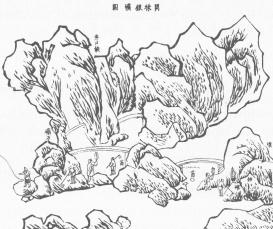Western Mineral Theory in Late Ming China: Mineral Genesis in a Hybrid Cosmology
This study explores the confrontation of Western mineral theory with Chinese cosmological knowledge during the late Ming Dynasty, and traces when the two merged and when they clashed. It aims to explore the exposure of imperial cosmology to Western natural philosophy impacted daily mining and metallurgical practices across different regions. Western mineral concepts entered China via Jesuit translations of early modern mineralogy texts. This study investigates how Jesuits adapted translation strategies to align Western mineral theory and its underlying philosophy with traditional Chinese cosmology, using one key text, Georgius Agricola’s De Re Metallica (1556).
This mid-sixteenth century work marked a transformative period away from examining the formal cause and nature of minerals towards a materialist understanding, culminating in Agricola’s vision in the text for a universal mining industry. As mining expanded globally in the seventeenth century, this influential text was translated into various languages. This study examines the reception and adaptation of the novel natural philosophical ideas contained in De Re Metallica in different cultural contexts, focssing on the translation process of Kunyu-Gezhi 坤舆格致. In 1640, Jesuit Johann Adam Schall von Bell collaborated with late Ming scholar Li Tianjing to translate parts of De Re Metallica into Chinese as Kunyu-Gezhi, presenting it to Ming Emperor Chongzhen. Despite the emperor’s intention to promote mining industry advancements outlined in Kunyu-Gezhi, opposition from officials hindered its implementation. The translation was lost during the conflicts between the Ming and Qing dynasties but resurfaced as a manuscript copy in 2015.
The Jesuits faced the challenge of selecting appropriate terms and concepts from Chinese cosmology to convey Western natural philosophy, ensuring comprehension by Chinese readers. However, this process also led to distortions in both Chinese cosmology and Western mineral knowledge. The translation gave rise to a novel form of knowledge diverging from Agricola's mineralogy and traditional Chinese mineral knowledge, both in theory and practice. Thus, exploring Kunyu-Gezhi and its failed fate is vital as it offers valuable insights into the reception and spread of new mineralogical philosophy, highlighting exchanges and clashes between Eastern and Western civilizations.

